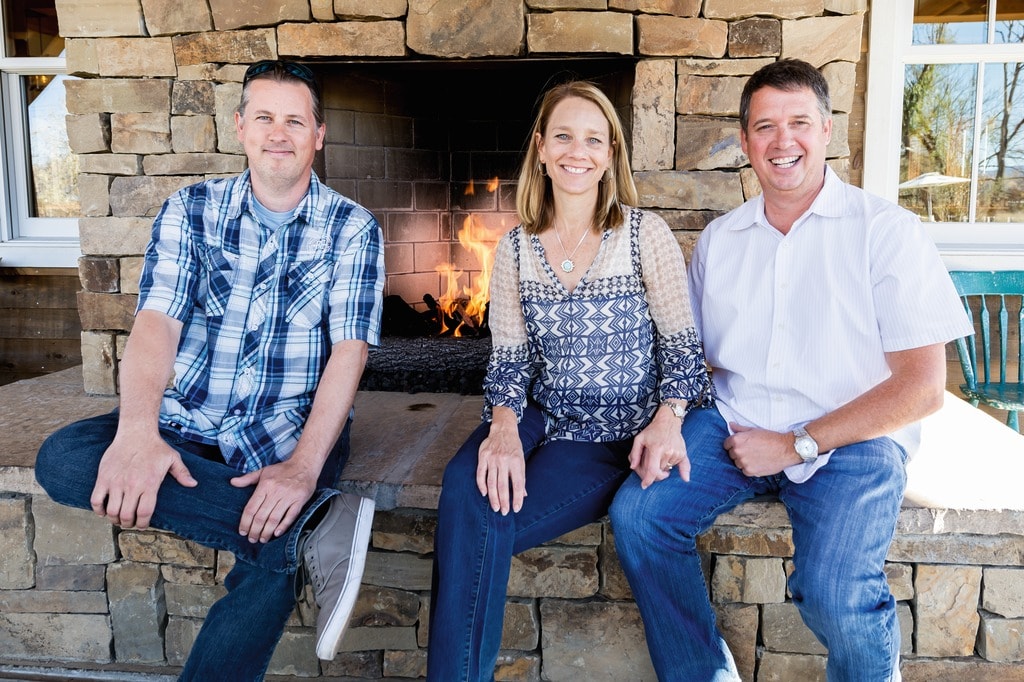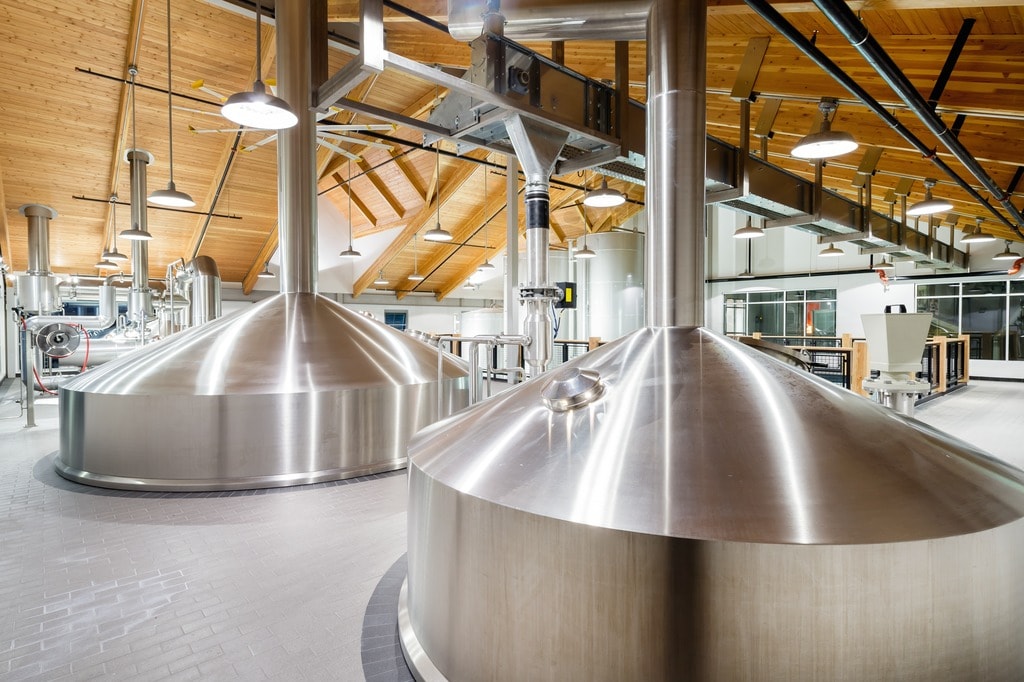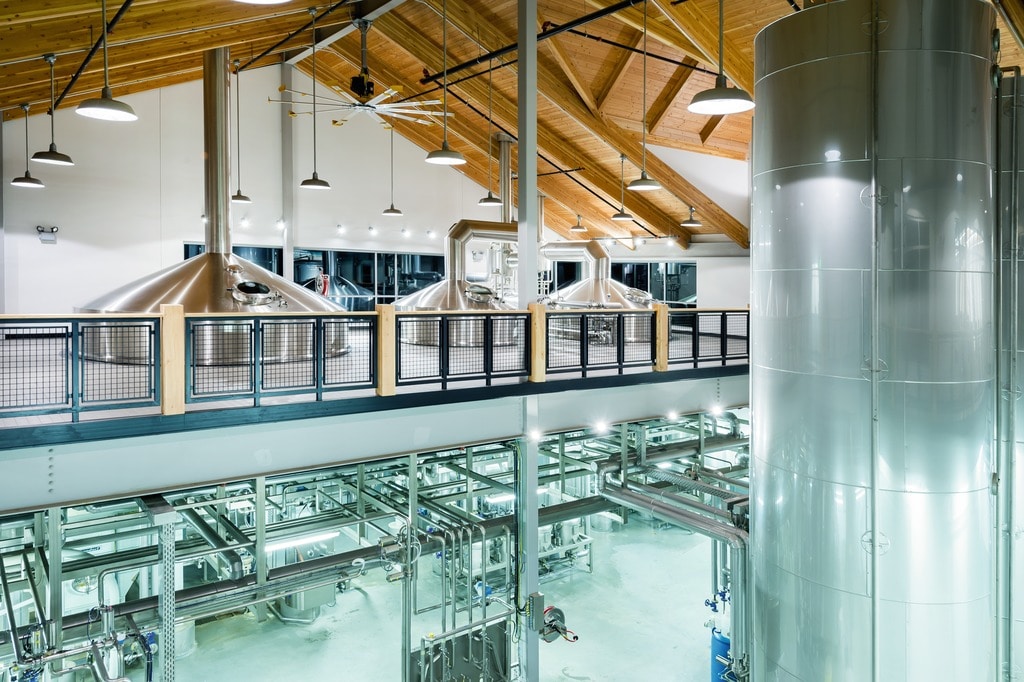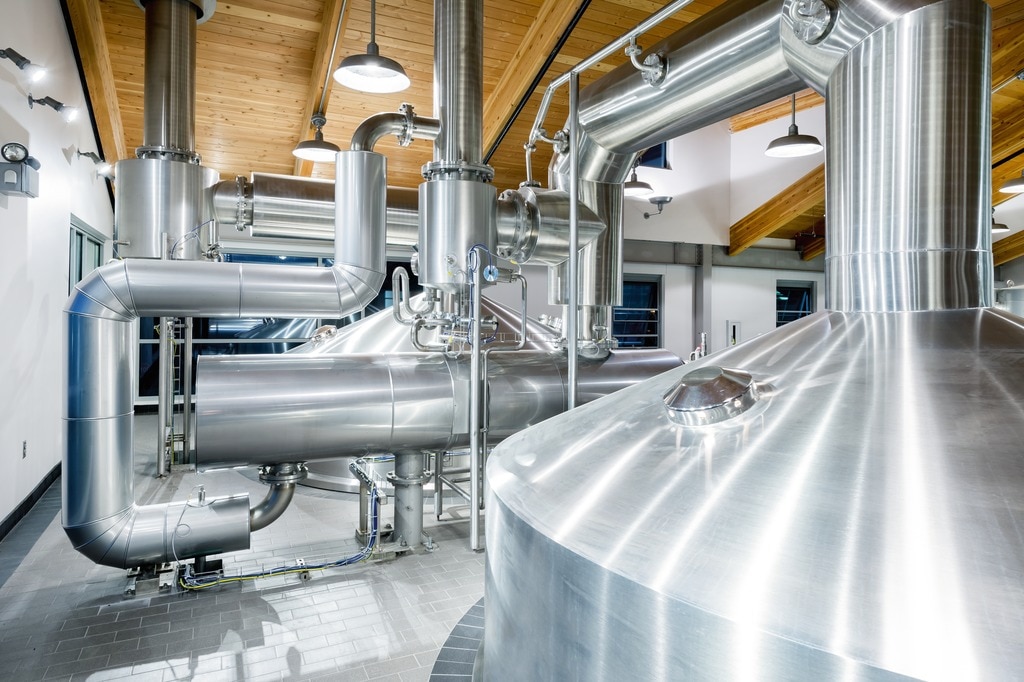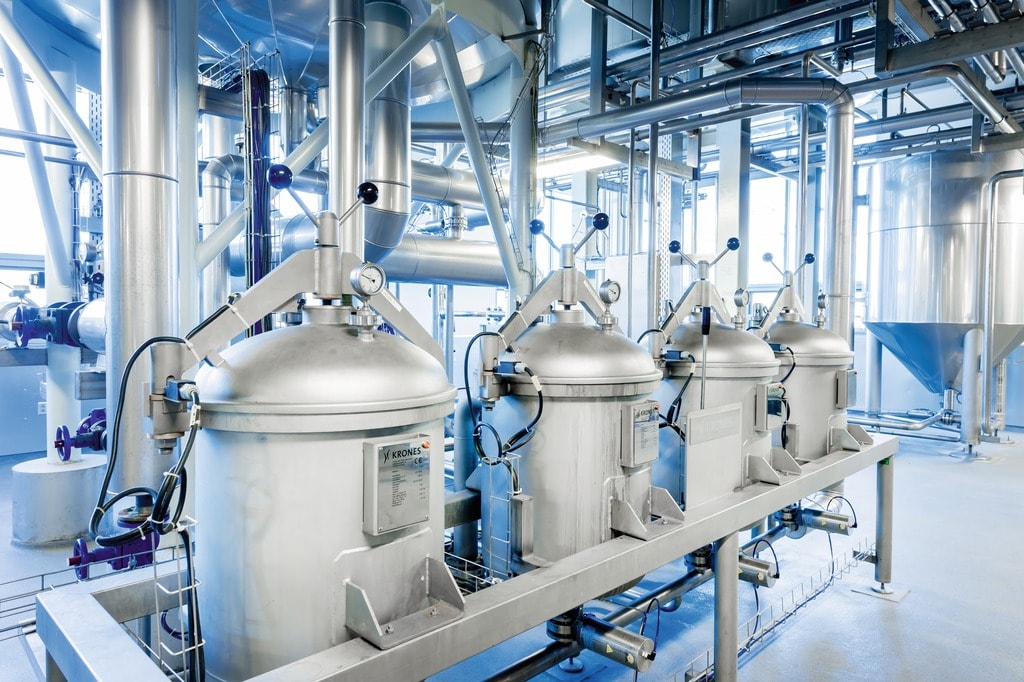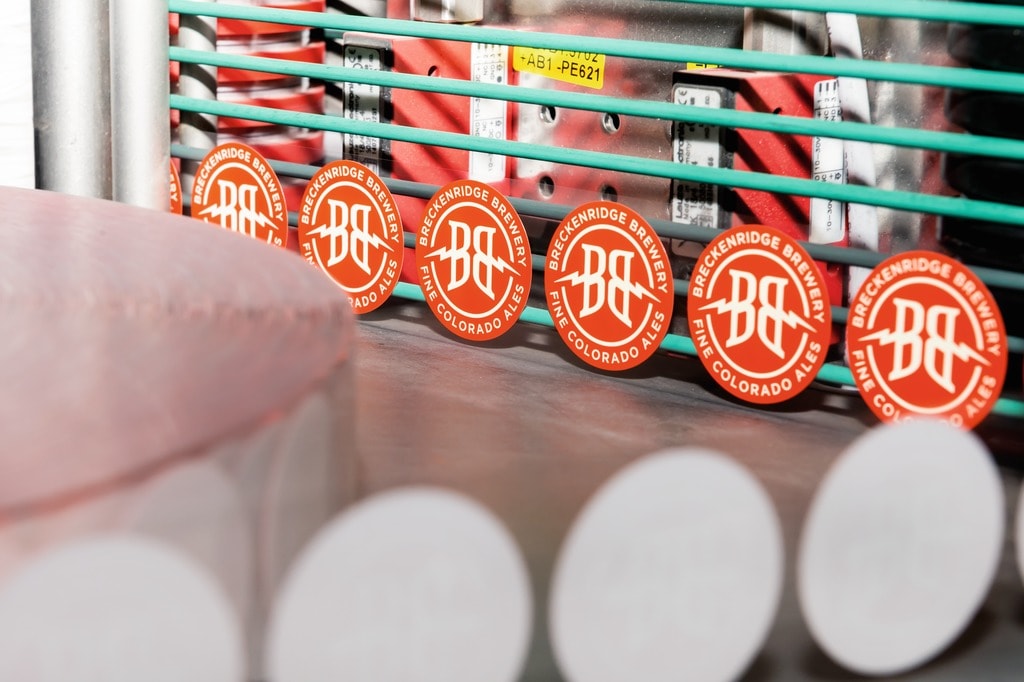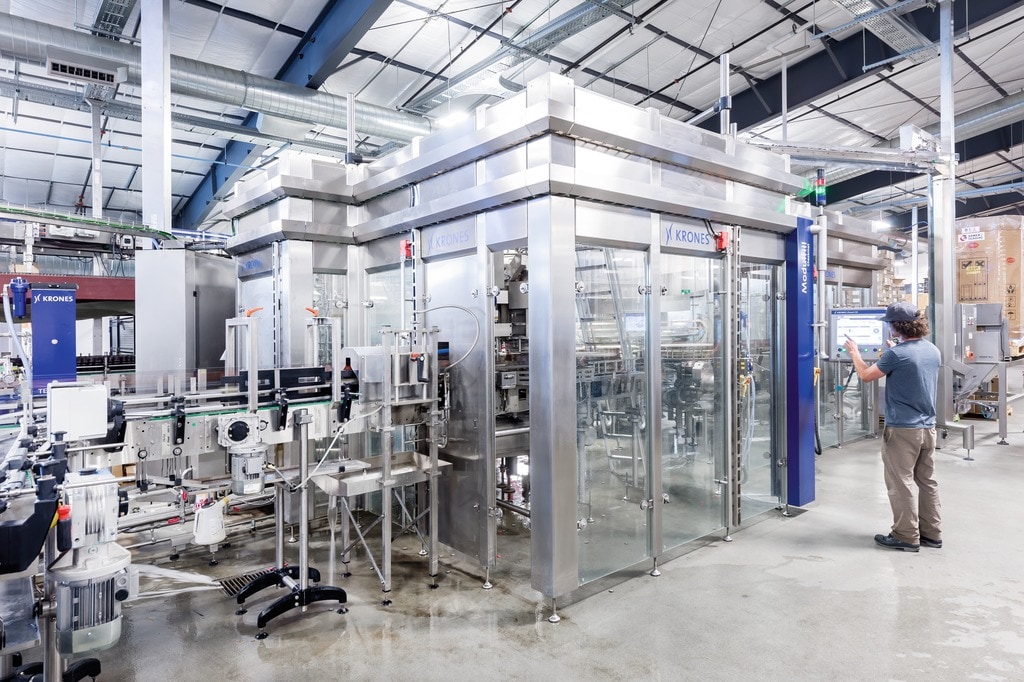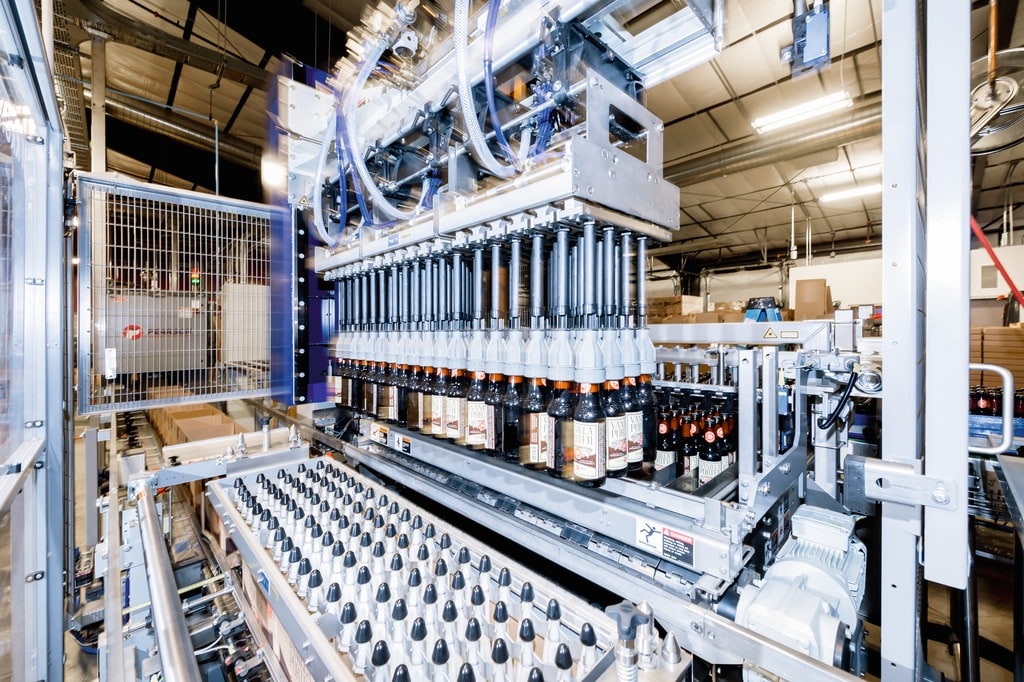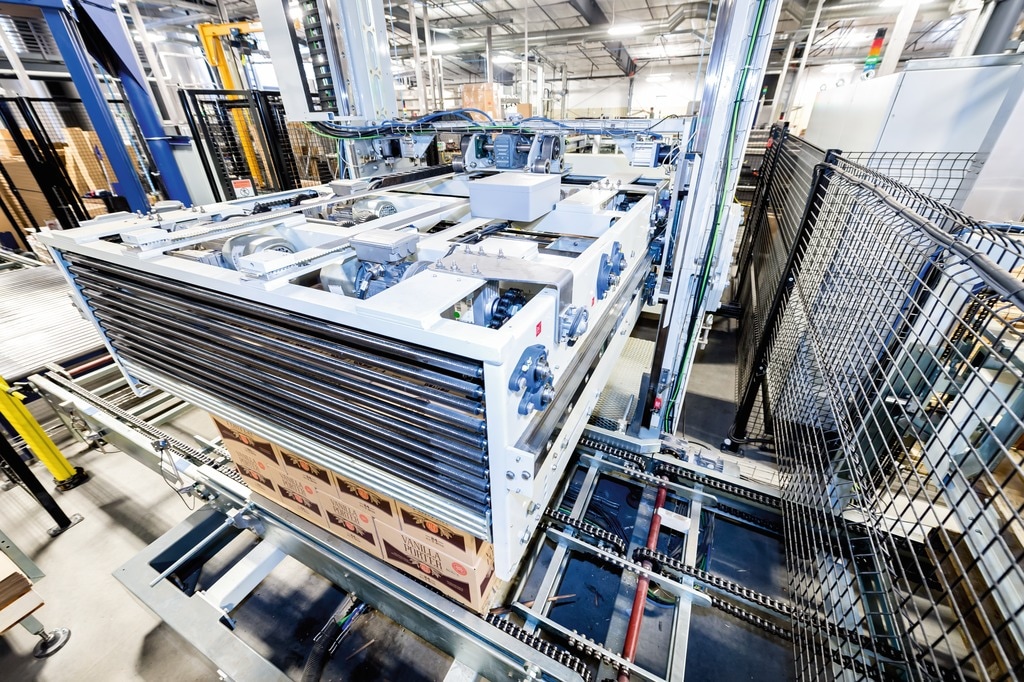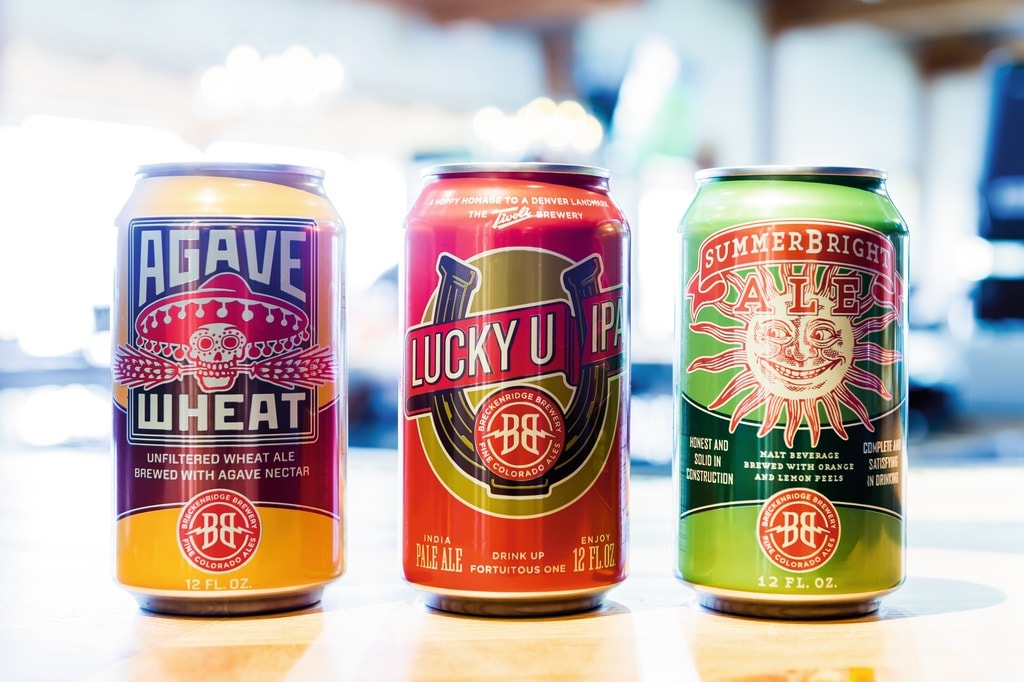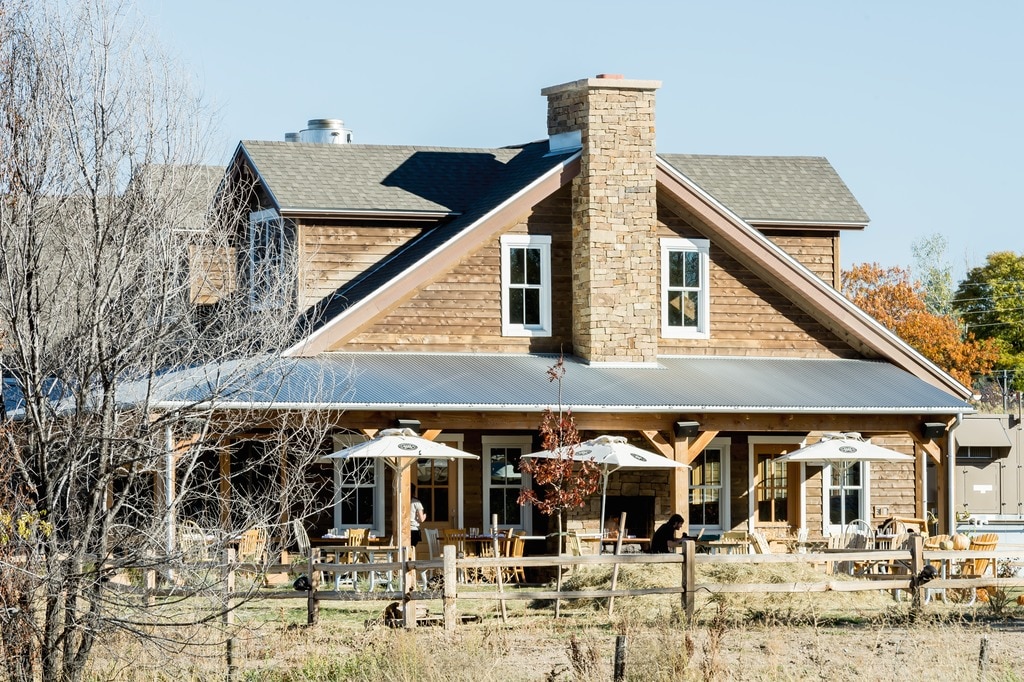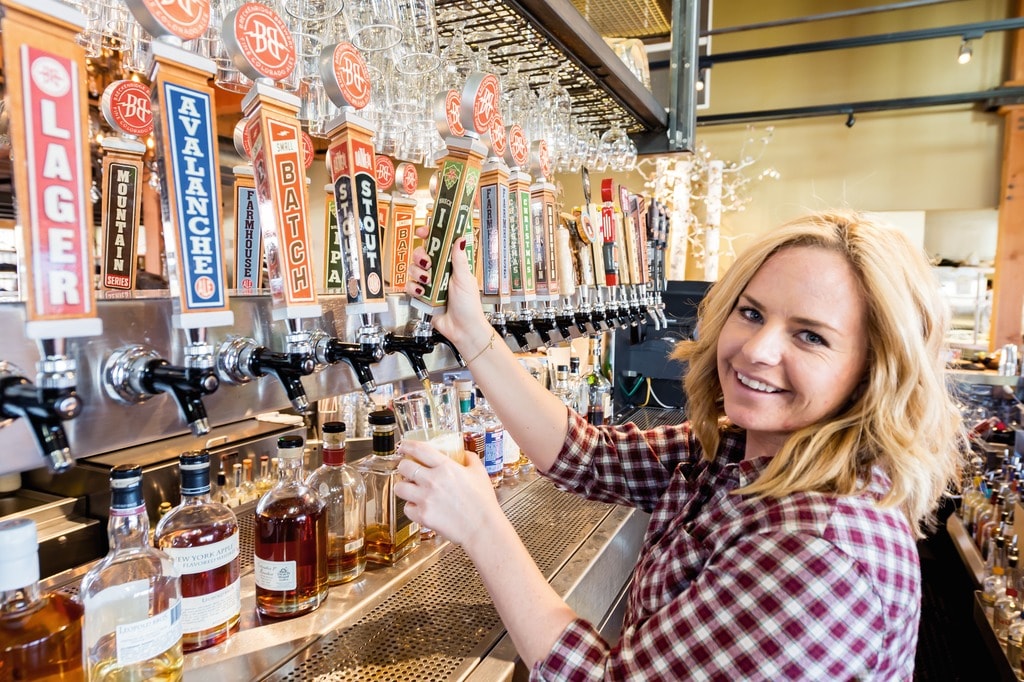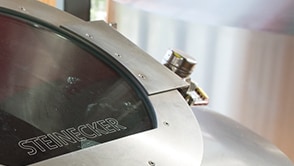The brewery, plus an attached restaurant with a beer garden and a playground, was intended to become a popular destination for recreation-seeking tourists and visitors from the Denver conurbation and beyond. These expectations were already being met in the first few months: on every normal working day, the restaurant is fully booked. In the brand-new brewery, Breckenridge has installed a conventional Steinecker brewhouse.
A view of the Rocky Mountains
For the new facility in Littleton, Breckenridge came up with a concept that was based on the good old Bavarian model: a commercial, mid-tier brewery combined with an elegant restaurant, a tasting room, and a beer garden. A rural idyll, a magnet for day-trippers, an Arcadian tourist attraction with a view of the Rocky Mountains – this concept was indeed the right one. In the very first year, 10,000 visitors booked a guided tour of the brewery, and the restaurant hosted many times that number of guests.
The campus consists of three buildings:
- The Farm House Restaurant in the style of a Colorado ranch
- The brewery itself, with the brewhouse and the process technology
- A third hall for fermentation and storage tanks, oak barrel storage, the bottling/canning line and a fulls store
As the brewhouse, Breckenridge installed a conventional Steinecker model. “Other men may dream, perhaps, of a 1965 Corvette or a Harley Davidson, but for 25 years I dreamed of a Steinecker brewhouse,” confesses Todd. “I used to read a lot about it, and talked to loads of brewmasters about the technology. There was doubtless a bit of romanticism involved,” says the senior brewmaster and co-proprietor. “Nevertheless, before placing the order, we had a good look around on the market, but after this technological and commercial comparison we still opted for Steinecker.”
Emissions reduced by a vapour condenser
The four-vessel brewhouse has been dimensioned for an output of 100 hectolitres per brew, with six brews a day and consists of:
“Mainly for aesthetic reasons, too, we opted for a conventional brewhouse from Steinecker,” emphasises Todd Usry. Large windows facing the Farm House Restaurant and beer garden make it into a showpiece brewhouse, which is elegantly illuminated in the evenings.
Since the brewery is located in the immediate vicinity of a residential area, Breckenridge had to take due account of the emission values. Architects, Krones’ engineers, the construction company and the energy utility got together, and developed a plan. “As far as I’m concerned, the vapours from the brewhouse have a delicately aromatic fragrance, but our neighbours were worried about unpleasant smells,” says Todd Usry. For precisely this reason, Breckenridge first installed a vapour condenser, with which Steinecker assured a 95-per-cent reduction in emissions – in actual fact, the figure measured was even 99 per cent. As a side-effect, there were massive energy savings amounting to 57 hectolitres of hot water at 82 degrees Celsius per brew of 117 hectolitres, which are recovered using the vapour condenser, and used again as mash liquor. “This means we only have to heat up around half of the mash liquor for each brew,” calculates Todd. “The neighbours did us a huge favour. We’re now saving up to 150,000 US dollars a year on energy. The investment thus pays for itself in less than two and a half years.”
Plans to retrofit an EquiTherm system
For storing the hot water, a separate tank has already been installed, which will then also be used for the EquiTherm energy recovery system when it’s retrofitted. The plan is, when additional capacity is needed in the brewhouse, to first of all increase the brew sequence from six to ten brews a day. Here, of course, it’s imperative to change over the energy carrier from the currently used steam to hot water. The hot water recovered will then no longer be used as mash liquor, but will serve to heat up the mash. Moreover, the brewhouse incorporates four hop-dosing tanks. The entire piping system features Evoguard valves.
During the installation phase for the brewhouse, from October 2014 to March 2015, the Krones Academy conducted onsite training for the operating staff assigned to the brewhouse and the Botec control system. “We became friends along the way,” says Todd. “Whenever we need it, we still get very good support from Krones Inc., and the VPN link is particularly efficient.” In March, the first brew was produced, and June saw the official inauguration.
The third building currently accommodates 16 cylindro-conical fermentation and storage tanks, each holding 470 hectolitres.
In the new Steinecker brewhouse, Breckenridge brews up to 24 different beers each year, of which about ten are available all the year round. The rest are recent new creations and special, barrel-aged beers.
Combined filling line
For filling purposes, Breckenridge Brewery uses a kegging line, whose current 85 kegs per hour can still be doubled, plus a small manual line for 5.0-litre party kegs. Most of its beers, however, are filled on a combined line for handling both bottles and cans, whose wet end was installed in its entirety by Krones.
After the containers have been fed into the line by a sweep-off depalletiser, they are dressed in pressure-sensitive labels by an Autocol labeller with two stations. A rinser-filler block comprising a Moduljet rinser and a Modulfill HRS counterpressure filler then fills the containers. “The field-proven double pre-evacuation feature ensures a low oxygen pick-up in the filler. The fill level is perfect, and uniform,” says Kurt Volker, Operations Director. The block also incorporates a crowner.
The filled and closed bottles are then packed in waiting cartons by a Smartpac; these are loaded on pallets by a Kosme Multipal 1GL and stabilised for transportation by a wrapper. As an alternative to bottling, Breckenridge has an option for meeting the growing demand for beer in cans with a Volumetic VOC can filler.
Optimally equipped for the future
Breckenridge craft beer is nowadays available in 35 of the USA’s states. With the new building project and the concomitant capacity upsizing, Breckenridge has established itself as the sixth-largest craft brewery in Colorado, and ranks among the 50 biggest breweries in the whole USA. “We have good staff, there’s a mutually supportive, feel-good mindset in the brewery, we have a lot of fun. Breckenridge was one of the pioneers in Colorado’s craft beer scene, and we’re benefiting from this today. The craft breweries, of which there are meanwhile more than 400 in Colorado, have always practiced technological cross-pollination. With the Steinecker brewhouse and Krones’ filling technology, we’re now optimally equipped for the future,” emphasises Todd Usry.
Wouldn't that be something for you too?
